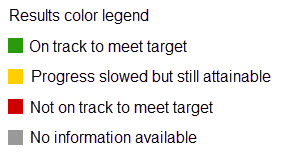City Employee Safety - Days Away Restricted or Transferred (DART) Rate YTD

Analysis of Performance
Based on industry trends, we continue to report higher number of total recordable incidents for our organization's size. In the first quarter, the City experienced several common types of workplace injuries, primarily related to seasonal conditions. Slips, trips, and falls due to ice and snow were among the most frequent incidents, often occurring in parking lots, sidewalks, and building entrances despite regular salting and snow removal efforts. Additionally, musculoskeletal injuries increased during this period, with many employees reporting strains and sprains caused by shoveling snow, lifting heavy objects while wearing bulky clothing, or working in cold environments that can stiffen muscles and reduce flexibility. These weather-related risks highlight the need for continued emphasis on winter safety protocols, proper ergonomic practices, and employee awareness to prevent recurring injuries in future cold-weather months.
The City is taking a proactive approach that includes analyzing incident trends, engaging employees in safety initiatives, and reinforcing accountability at all levels. By prioritizing a culture of safety, investing in targeted training, and ensuring consistent enforcement of safety standards, the City can work toward reducing its TRIR and creating a safer work environment for all employees.